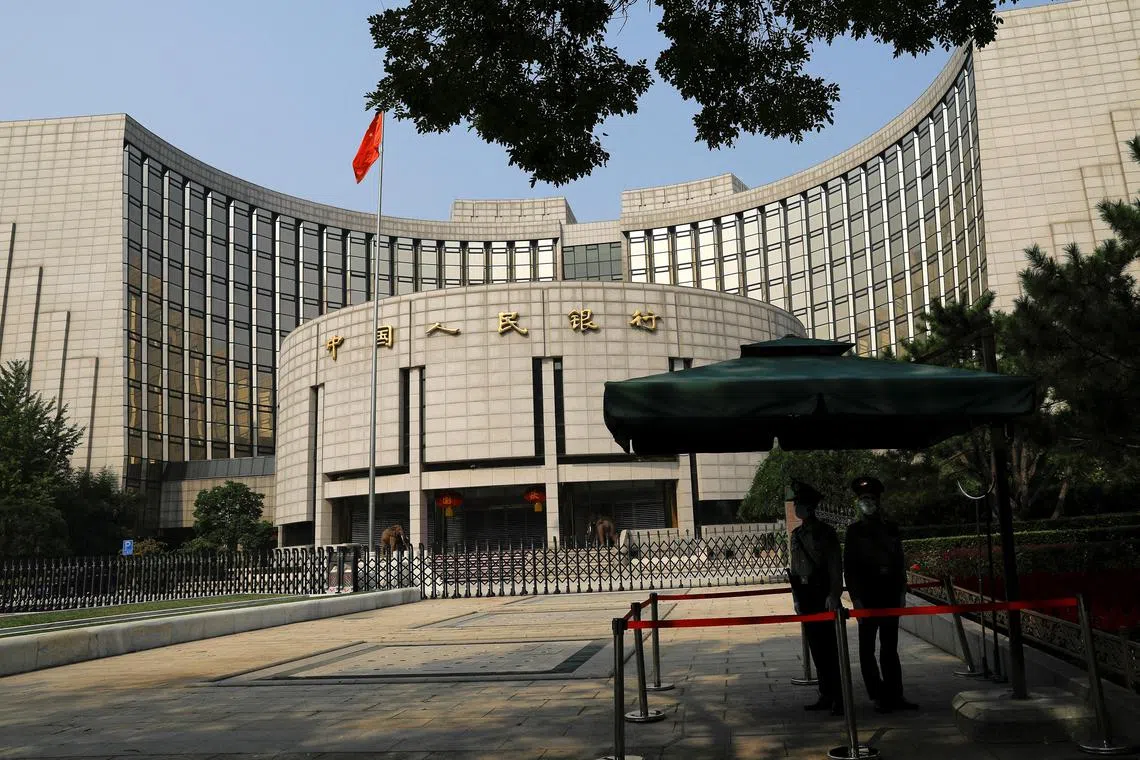China cuts key lending rates to support economy; move less aggressive than expected
Sign up now: Get ST's newsletters delivered to your inbox

China last cut both LPRs in August 2022 to boost the economy.
PHOTO: REUTERS
Follow topic:
SHANGHAI - China cut its key lending benchmarks on Tuesday, the first such reductions in 10 months as the authorities seek to shore up a slowing economic recovery, although concerns about the property market meant the easing was not as large as expected.
The latest monetary loosening comes as post-pandemic recovery in the world’s second-largest economy shows signs of losing the initial momentum seen in the first quarter.
The one-year loan prime rate (LPR) was lowered by 10 basis points to 3.55 per cent, while the five-year LPR was cut by the same margin to 4.2 per cent.
While all 32 participants in a Reuters poll had expected reductions to both rates, the cut to the five-year rate was smaller than many expected.
“These cuts will lower the cost of new loans, as well as interest payments on existing loans,” said Mr Julian Evans-Pritchard, head of China economics at Capital Economics.
“That should offer some modest support to economic activity,” he added. “But we think it is unlikely to drive a sharp acceleration in credit growth, given weak credit demand.”
The smaller-than-expected cut disappointed investors, with the Hang Seng Mainland Properties Index dropping 3.85 per cent, outpacing a fall in the benchmark Hang Seng Index. The Chinese currency lost as much as 0.25 per cent, and broader Asian stock markets also dipped.
The People’s Bank of China lowered short- and medium-term policy rates last week
ANZ senior China strategist Xing Zhaopeng said the smaller-than-expected cut to the five-year tenor suggests the authorities are wary of using the property market as a form of short-term stimulus, which could create new bubble risks.
“It shows that the policy still gives priority to the new economy, and it will only ensure a soft landing of the old economy rather than stimulation,” said Mr Xing.
He added that new stimulus could combine short-term measures and long-term reforms.
Mr Bruce Pang, chief economist and head of research for Greater China at Jones Lang LaSalle, said: “There is still a possibility of further interest rate cuts and reserve requirement ratio cuts in the remainder of this year.”
He added: “There is no need to roll out all policy measures at once.”
China’s Cabinet met last Friday to discuss measures to spur growth in the economy and pledged more policy support.
“More policy measures may be rolled out separately, including but not limited to a 25 basis point cumulative cut to the LPR by the year end, and property easing measures to cut payment ratios or mortgage rates, as well as some form of consumption support,” analysts at BofA global research said in a note.
“Such marginal easing will probably help prevent growth from slowing sharply, but will unlikely offer a strong boost to reverse the growth slippage in the near future,” they said, downgrading their forecasts for China’s economic growth outlook for 2023 to 5.7 per cent from 6.3 per cent previously.
Several global investment banks cut their 2023 gross domestic product growth forecasts for China after May data showed the recovery was faltering.
The LPR, which banks normally charge their best clients, is set by 18 designated commercial banks which submit proposed rates to the central bank every month.
Most new and outstanding loans in China are based on the one-year LPR, while the five-year rate influences the pricing of mortgages. China last cut both LPRs in August 2022

